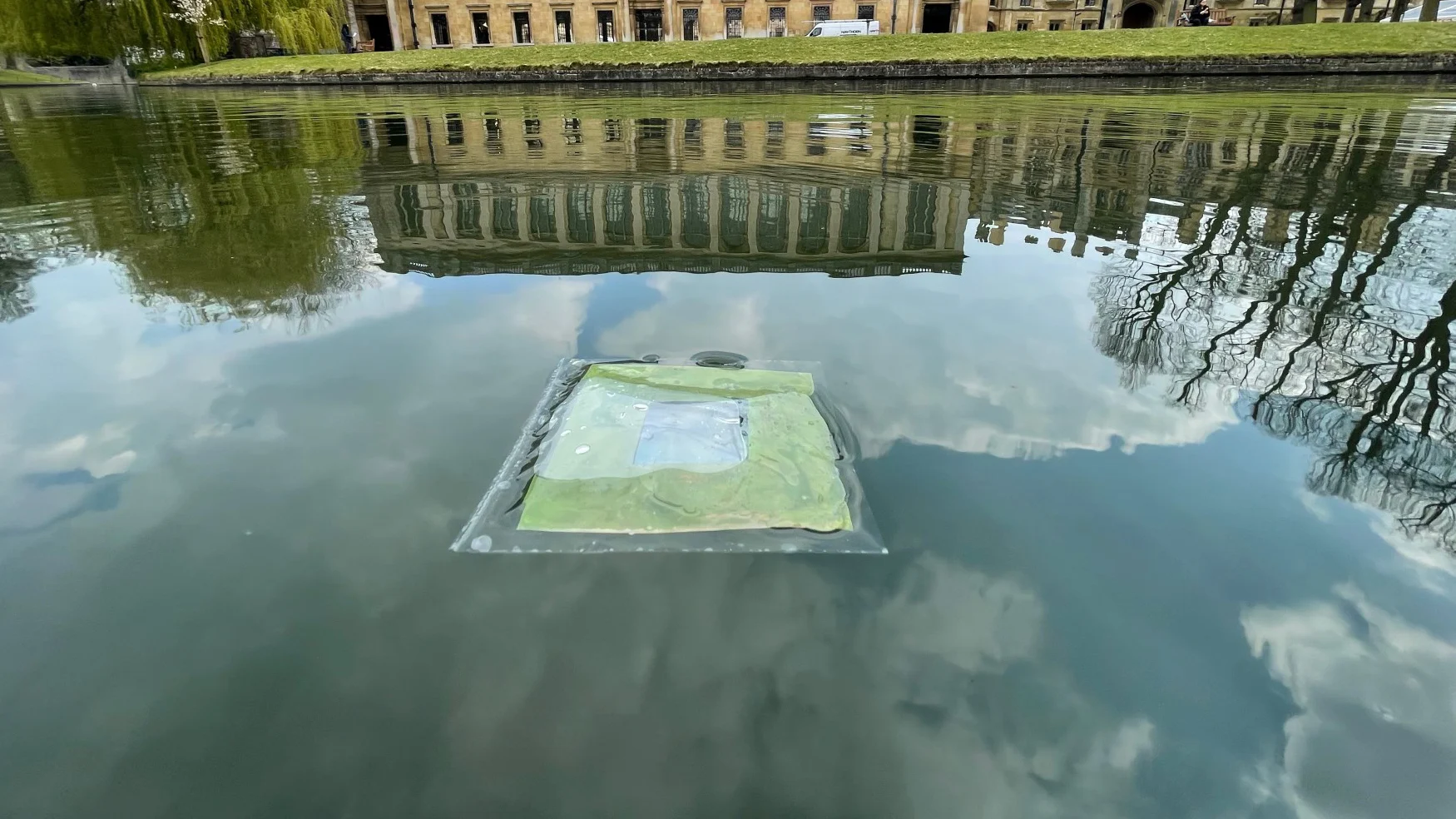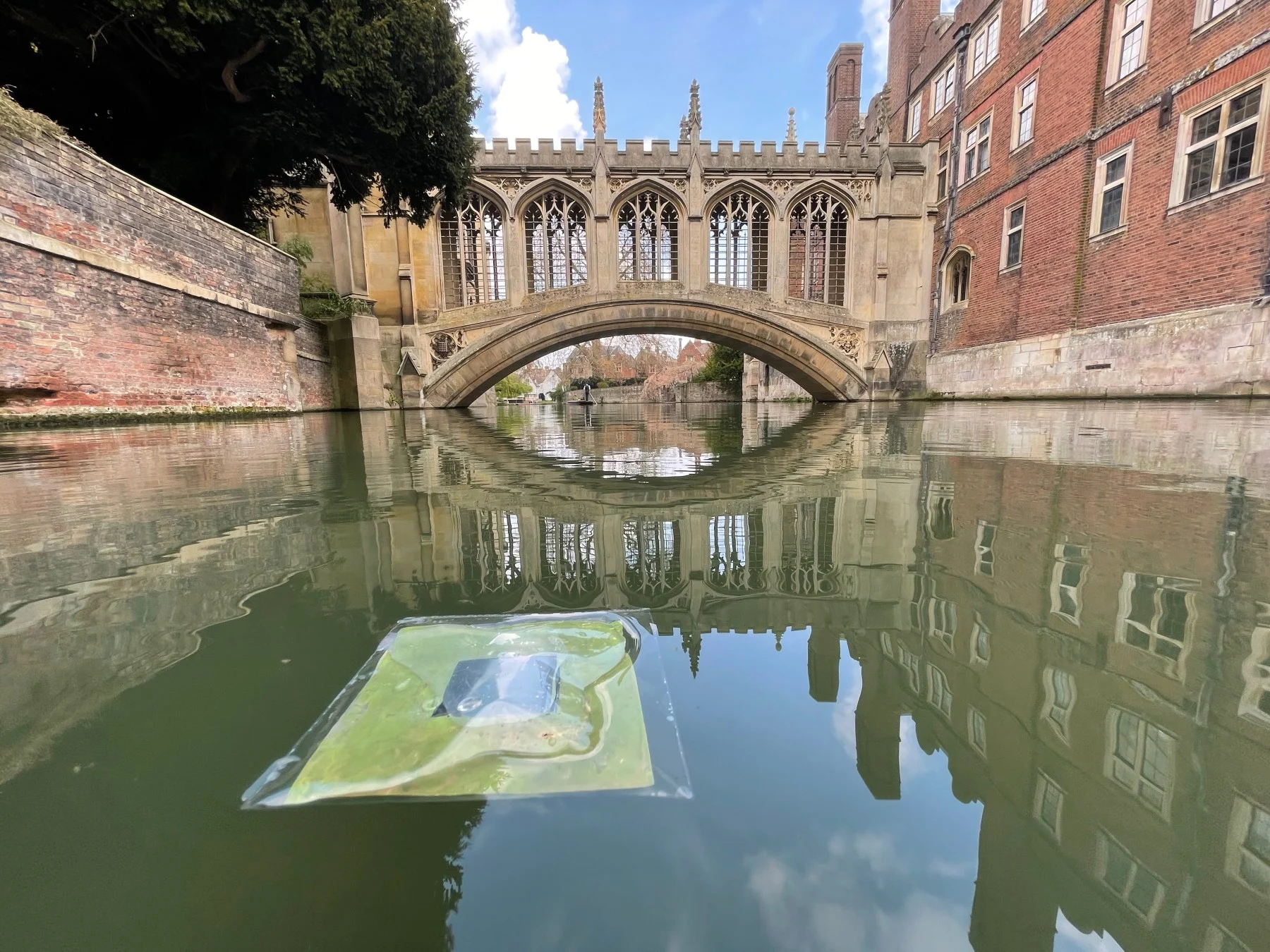
These floating artificial leaves could one day generate fuel out at sea
The researchers say the artificial leaves could improve sustainability in the global shipping industry where virtually zero low-carbon fuels are currently being used.
Researchers from the University of Cambridge have designed ultra-thin, low-cost "leaves" capable of generating clean fuels from sunlight and water.
Impressively, the researchers claim their autonomous devices can convert sunlight into fuels just as efficiently as plant leaves do.
Photosynthesis inspired the creation of these artificial leaves and the researchers hope they will one day be used as a sustainable alternative to fossil fuels, particularly in the global shipping industry.

Floating artificial leaf on the River Cam near St John's College, Cambridge. (Virgil Andrei/ University of Cambridge)
Other devices that also use photoelectrochemical technology exist but are often made with heavy materials that limit where they can be transported and used. This inspired the researchers to explore how artificial leaves can be designed to be light enough to float on water while producing as much energy as possible.
The devices are covered in a water-repellent micrometre-thin layer that prevents moisture from damaging the energy-conducting materials. After being placed on the water’s surface, the leaves can produce hydrogen or syngas, which is a mixture of carbon monoxide, carbon dioxide, and hydrogen.
“Syngas is an important industrial intermediate in the synthesis of conventional liquid fuels, which can be used in most types of existing combustion engines,” Virgil Andrei, the study’s co-lead author, explained to The Weather Network.

Bubbles form under the artificial leaf and keep it afloat during a lab experiment. (Virgil Andrei/ University of Cambridge)
Given the variable amount of time that aquatic vessels typically spend on their journeys, the researchers are exploring how these devices can be scaled to power lengthy trips.
“We are exploring other light absorbers, which may push the durability of such devices to months or even years,” said Andrei.

A closeup look at the artificial leaf. (Virgil Andrei/ University of Cambridge)
The International Energy Agency (IEA) states two per cent of all energy-related carbon dioxide emissions on Earth came from the global shipping industry in 2020. There are virtually no low-carbon fuels currently being used in the industry and many policymakers and climate experts say not enough is being done to lower shipping-related emissions.
Part of what makes this artificial leaf technology so unique is the compact size that allows it to be used on either land or sea. Although the leaves do rely on sunlight to produce energy, the study states that there was a significant amount of fuel produced during cloudy days.
“Many renewable energy technologies, including solar fuel technologies, can take up large amounts of space on land, so moving production to open water would mean that clean energy and land use aren’t competing with one another,” Erwin Reisner, another researcher that worked on the study, stated in a press release.
“In theory, you could roll up these devices and put them almost anywhere, in almost any country, which would also help with energy security.”
Thumbnail image: Virgil Andrei/ University of Cambridge












